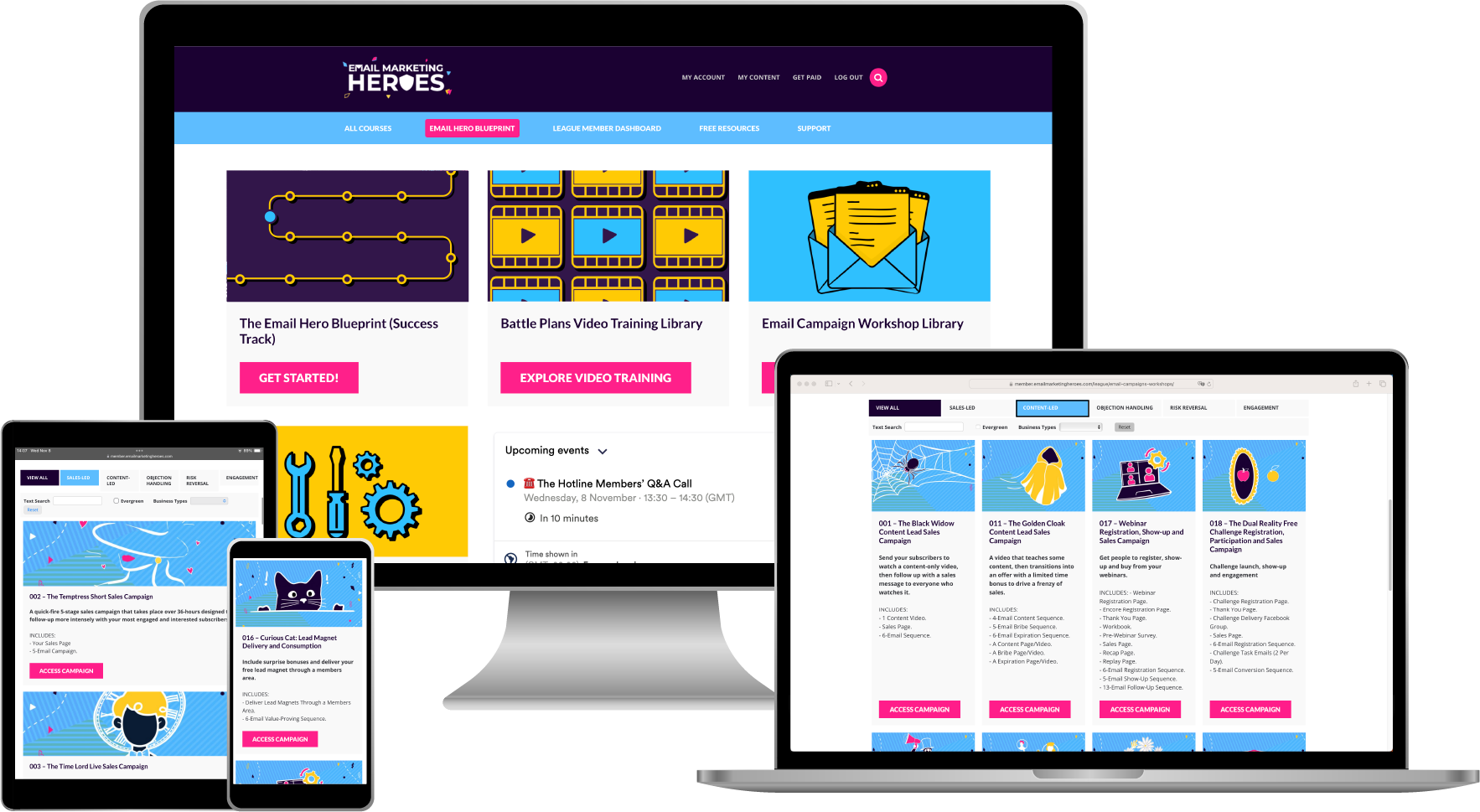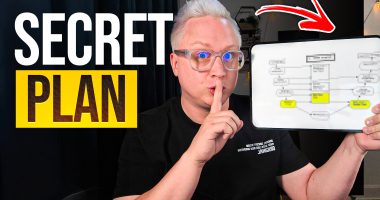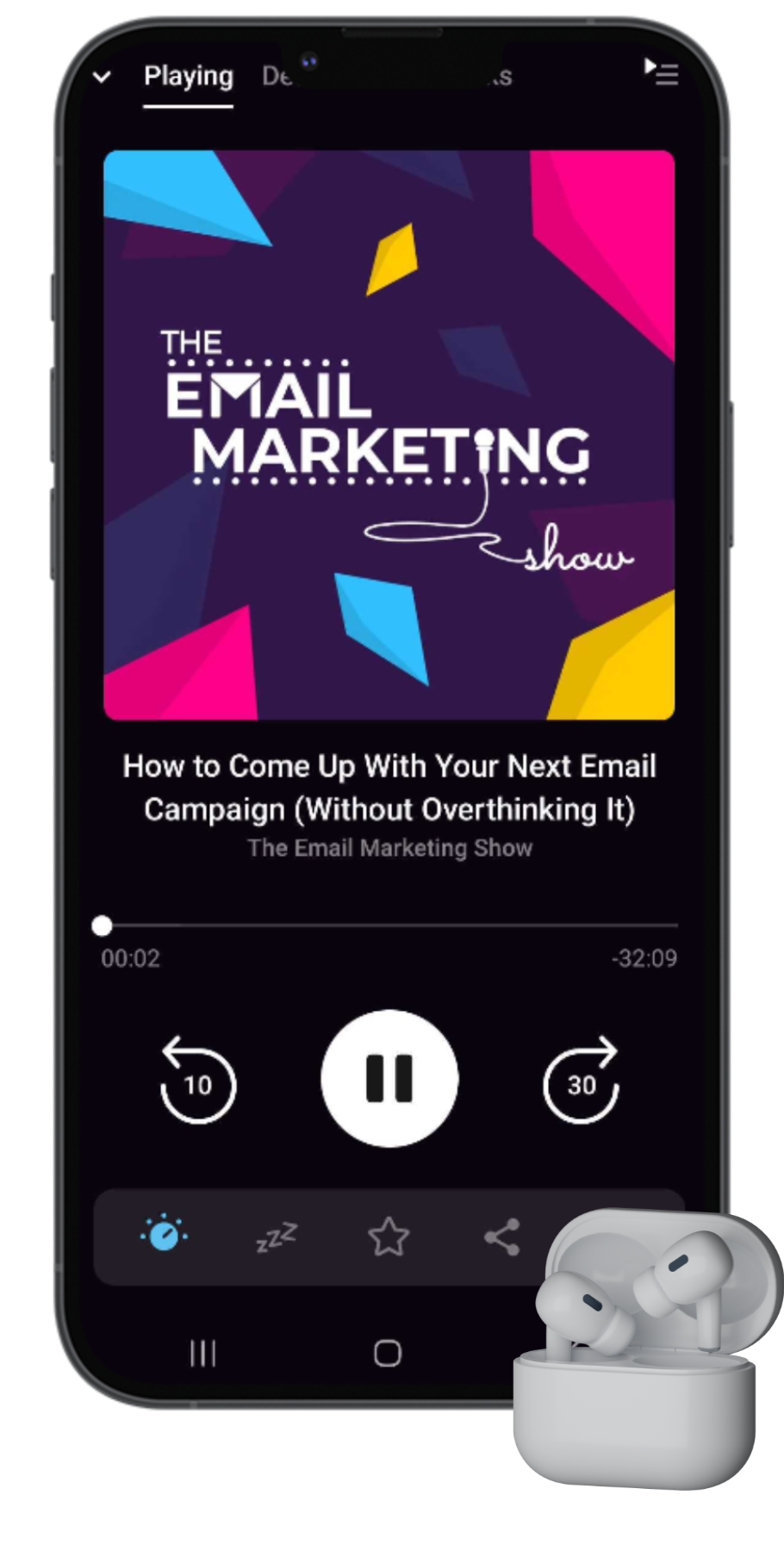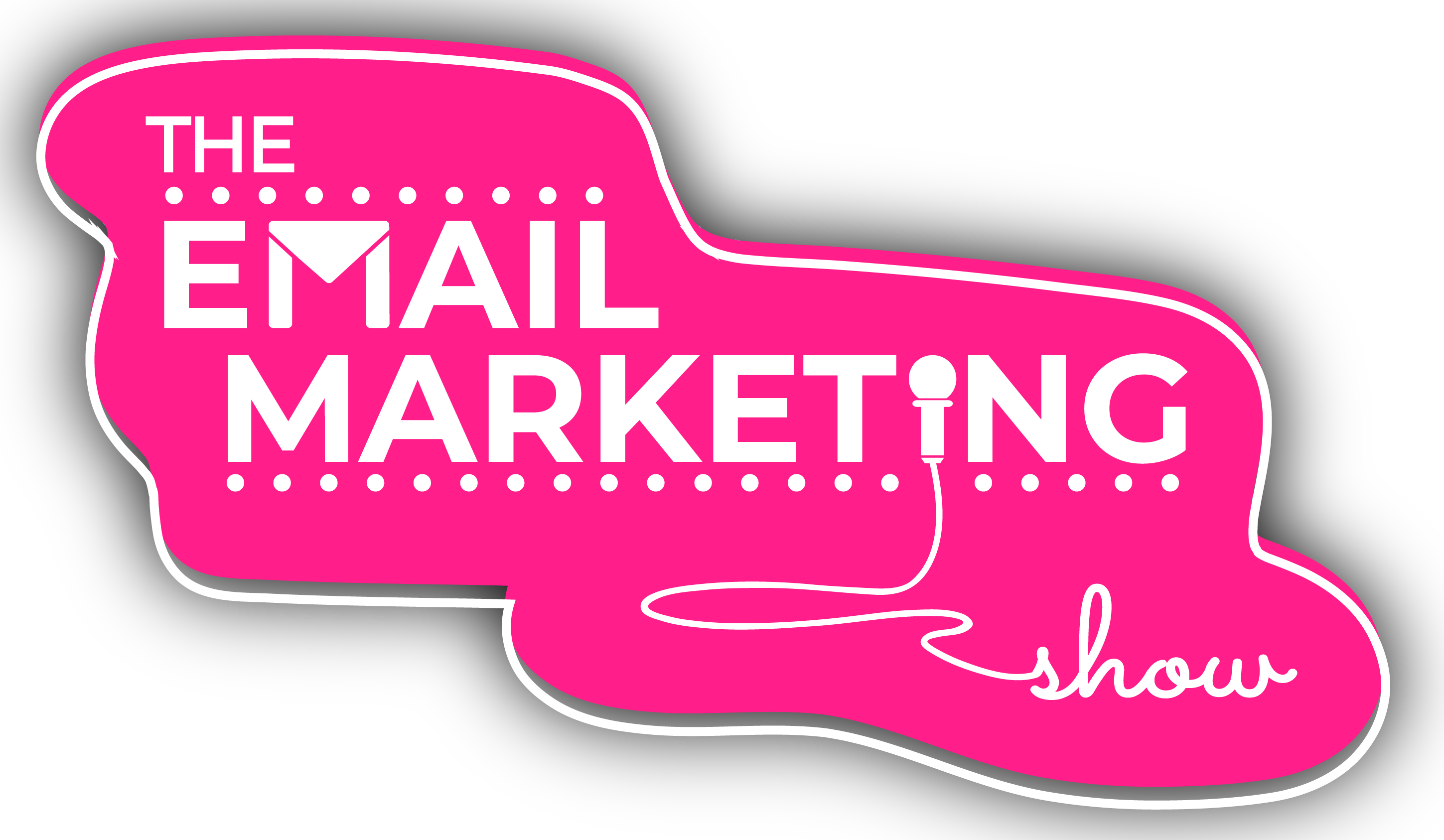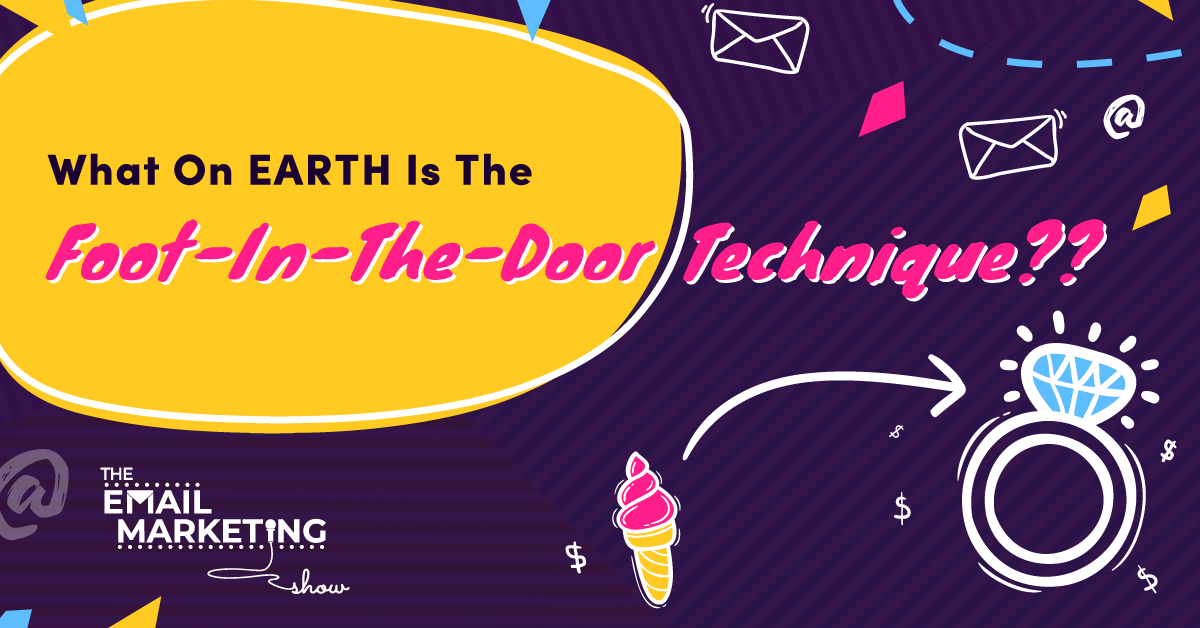
What Is The ‘Foot-In-The-Door’ Technique And Why Does It Work So Bloody Well?!
What on earth is the foot-in-the-door technique, and why does it work so bloody well every single time?
If you want to find out how to make more sales with this incredibly simple technique, you're in the right place!
Let's get this show on the road!
SOME EPISODE HIGHLIGHTS: (0:25) Join our FREE Facebook Group. (3:43) Check out our sponsor ZeroBounce. (5:32) What is the foot-in-the-door technique? (7:22) Why does this technique work so well? (11:56 ) You get to upgrade buyers. (13:15) An example of the foot-in-the-door technique. (14:58) When does the foot-in-the-door technique fail? (27:05) Ascension vs descension marketing. (31:54) How can the foot-in-the-door technique be used in your email marketing? (37:28) How to use the foot-in-the-door technique if you sell a membership. (39:16) Subject line of the week.
What is the foot-in-the-door technique?
The foot-in-the-door technique is a marketing tool that gets someone to make a small commitment with you in order to increase conversions for a larger commitment. In other words, you want people to do a simple, easy thing and then you encourage them to buy something more. It's about getting people ‘in motion' because something that's already moving (as opposed to something that's static) has momentum to keep going.
Why does this technique work so well?
It creates momentum
We all know that momentum works. It's not magic or psychology – it's just physics! If you've ever tried to push a broken-down car, getting the wheels to start turning at first is really hard. But when you get the car going (and it's in momentum) it gets much easier. And human beings are exactly the same.
So as a business owner, you want to get people into motion. Because when human beings commit to something, they're more likely to be consistent with it. Robert Cialdini talks about this in his book Influence: The Psychology of Persuasion, and he calls it the Commitment Consistency Principle. It’s the idea that if we say or do something that makes us internally back it up, we’ll stand by it. Because we like to be seen as consistent – to ourselves and others.
So if someone bought a small product from you (like an eBook or a paid-for lead magnet), they're more likely to buy a course you have on the same topic when you offer it to them. And that's because they've already committed to something and shown their interest.
You only show your main offer to pre-qualified people
Aside from putting people in momentum, the foot-in-the-door technique works because it allows you to show your main offer to the people who've already told you they're interested. If you have a new programme and email your whole list about it (several times, as the case might be), some people might leave because they're not interested.
But if you only email the people who already showed you they have an interest by making a small commitment (like watching a video about that topic), then you can tell them about your offer and be more confident they'll buy.
For example, if you've made a video about a particular topic, and someone's watched 80% of it, they must be interested, right? So tell them about your paid offer. Because they already have their foot in the door, and they're more likely to keep going after that.
You get to upgrade buyers
The other benefit of using this technique is that if you have a front-end offer (smaller commitment), you can then upsell buyers and sell them something else. For example, if you have a membership that's available at a monthly offer, definitely show them the annual option too.
Having said that, if you have multiple products or offers and show them all at once, people might get confused in trying to understand what they need. So rather than packaging all your products up as different options and leaving people to figure out what they need, get them to make a small commitment first, and then upgrade them later.
An example of the foot-in-the-door-technique
A good example of this comes from our friends Martin and Lyndsay from Jammy Digital, who sell Content Marketing services around blogging and SEO. They sell blog templates for around $47 but also have a done-for-you service at a much higher price point. And 60% of the people who buy their done-for-you service bought the $47 product first. They put their foot in the door first by buying a low-resistance product and only then made a larger commitment.
And this is interesting, right? Because all these people first bought templates to write blog posts themselves and then decided they didn't have the time, patience, or inclination to do it and hired an agency to do it for them. It goes to show there’s no real logic to a lot of marketing, sales, or people’s buying habits! So don't assume that because someone bought a certain product from you, they won't be interested in more.
When does the foot-in-the-door technique fail?
The higher-commitment offer is ‘blind' or unrelated
This technique doesn't always work. In fact, it will fail if you don't have the right thinking behind it. If the offer is ‘blind', then it won't work. For example, if you create a short video about, say, the future of email marketing, and then target the people who watched that with an offer for a 3-day in-person boot camp on using AI to write sales sequences, it won't work. Because the fact they watched the video tells you nothing. It's a blind offer.
It's also too unrelated – it doesn't qualify people. If you have a free lead magnet or a paid, low-cost entry product that talks about how to write a short sales sequence with AI, then it's different. The two products are on the same topic – they are related. And the smaller-commitment product helps you sell the larger-commitment one. But the link has to be explicit.
A ridiculous example of something that wouldn't work is someone selling a product about dog training and then offering a service about weight loss. And while that's a ludicrous example, we see a lot of people unknowingly making this mistake. Because it's easy to think that two products are related, but the link needs to be really tight. They need to be strictly and directly correlated – a lot more than you think. What leads someone from one purchase to another is a really tight path.
We have a campaign inside The League that helps you create the most tightly bridged upsell from one offer to the next, whether that’s immediate or you’re asking someone to buy something now and then another product sometime later. And when you do this right, you're looking at a conversion rate of 40% and above.
You haven't qualified people for their problem
Let's talk about another reason why the foot-in-the-door technique might not work for you. And we'll use the example of our Bottomless Email Strategy course, which teaches people how to send emails every day. When people buy that course, at some point, we'll also offer them our membership, The League.
But without a lot of education about the difference between sending individual, broadcast emails and automated campaigns or sequences, people might not buy. They might just think that what they get with the course is enough.
But the thing is – people buy different things to solve different problems. So you have to qualify a person not for what they want or need, but for their problem. Because that's how you get them to buy multiple products. And the same principle applies when you want them to go from a lead magnet (or a lower-cost product) into a higher-commitment type offer. That's when the foot-in-the-door technique will work for you.

The Top 10 Books To 'Power Up' Your Email Marketing
10 book recommendations that will improve all areas of your email marketing (including some underground treasures that we stumbled upon which have been game-changing for us).
Ascension vs descension marketing
Another point worth mentioning is this idea of ascension marketing vs descension marketing. There's a popular theory that you should sell someone something cheap and then go with something more expensive. In other words – the foot-in-the-door technique. But you don’t have to do that as your first attempt. In fact, through email marketing, you have multiple opportunities to sell people more things from different angles over time.
We’ve tested this idea of ascension marketing quite extensively in our business. But we've also tested the opposite, which means we don't even attempt the foot-in-the-door technique until later. In other words, if we offered everyone a lower-cost product and only then tried to upsell our membership, The League, only the people who bought something from us in the first place would see that offer. But if we try and sell The League to everyone in our world, more people see it. And that means we make more money overall.
We've also seen a technique that sits somewhere between ascension and descension marketing – a bit of a hybrid if you like. And it's about acquiring subscribers on a paid basis by asking people to buy a low-end price product. And from there, you present your highest-touch offers, such as a coaching programme or a mastermind, for example.
Pure descension marketing, on the other hand, happens when you offer your customers your high-end product, and they say no. In that case, you then present them with other products at a lower price.
So if you're acquiring subscribers for free (which for the longest time we were, through our Facebook group), you can sell them your core offer first (in our case, The League), and if they don't buy, then you can use the foot-in-the-door technique.
How can the foot-in-the-door technique be used in your email marketing?
The Daisy Chain campaign
Inside The League, we have a campaign called The Daisy Chain, which is the epitome of foot-in-the-door. And it’s an interesting example of getting someone to make a small commitment to increase the conversion of a larger commitment.
We use this campaign for people who we've already sent a sales video to but didn't buy. So we send them another short video where they can learn something. And if they watch that, we'll send them more emails because, by this point, they've made a small commitment towards a larger one (i.e. watching a slightly longer, closely-related video). And when you put this video together, remember that it has to be a tight fit and cannot be unrelated. If done right, that second video is what sells them your offer.
Using a discount coupon
Another way we apply the foot-in-the-door technique in our business is to run ads to a sales page for a $99 product. On that page, at the top, we also offer a time-bound $30 coupon in exchange for someone's email address.
When people enter their email addresses to claim the discount, the page refreshes. We take them to a different version of that page using our Countdown Hero software, which gives them a timed commitment. That means that for a couple of days, they can get the product for $67.
And this works because we’ve legitimised the fact it’s a real discount. But also, people are now committed. By giving us their email address, they’re putting their foot forward and saying they’re interested in buying this. And they’re doing that by asking for a coupon code, which only works on our website and for this specific product and nothing else.
That's why the conversion with this technique is really high – it qualifies the person as ready to buy. And of course, because we now have a name and email address, we can follow up via email and let them know that their coupon code is running out.
How to use the foot-in-the-door technique if you sell a membership
The Splinter campaign
If you have a membership or an ongoing subscription, we have a campaign inside our membership The League just for that. It's called the Splinter Campaign, and we use it to sell our highest commitment and primary offer first. And then, further down our email engine, if someone hasn’t bought yet, we come back to this idea of ascension marketing and apply the foot-in-the-door technique.
We sell our core offer by using a hook to leverage people into it. And we do that by splitting something that’s normally inside the membership and pulling it aside. In other words, we sell it separately for a one-off price. And when people buy that, we upsell them to the membership.
If you want access to a bunch of campaigns that are already trialled and tested to use this technique, go and check out our membership The League.
Subject line of the week
This week’s subject line is the words, “Can I take your bag [+ the little bag emoji]?” And that’s a question that someone might hear in everyday life but when it’s used in an email subject line, it seems weird.
So you can pick any common phrase that you’ve heard over and over again but doesn’t naturally belong in an email. Another example is “Would you like fries with that?” It works well because it breaks the pattern but has a sense of familiarity at the same time. Check it out!
Useful Episode Resources
Related episodes
Use THIS Free-Trial Email Sequence To Turn Your Subscribers Into Paying Customers.
How to Create 3 Big Sales Spikes During Your Launch with Mara Glazer.
The Simple Formula For Coaches To Sell On Autopilot With Email Marketing.
FREE list to improve your email marketing
If you want to write better emails, come up with better content, and move your readers to click and buy, here's how. We put together this list of our Top 10 most highly recommended books that will improve all areas of your email marketing (including some underground treasures that we happened upon, which have been game-changing for us). Grab your FREE list here.
Join our FREE Facebook group
If you want to chat about how you can maximise the value of your email list and make more money from every subscriber, we can help! We know your business is different, so come and hang out in our FREE Facebook group, the Email Marketing Show Community for Course Creators and Coaches. We share a lot of training and resources, and you can talk about what you're up to.
Try ResponseSuite for $1
This week's episode is sponsored by ResponseSuite.com, the survey quiz and application form tool that we created specifically for small businesses like you to integrate with your marketing systems to segment your subscribers and make more sales. Try it out for 14 days for just $1.
Join The League Membership
Not sick of us yet? Every day we hang out in our amazing community of Email Marketing Heroes. We share all of our training and campaigns and a whole bunch of other stuff. If you're looking to learn how to use psychology-driven marketing to level up your email campaigns, come and check out The League Membership. It's the number one place to hang out and grow your email marketing. Best news yet? You can apply everything we talk about in this show.
Subscribe and review The Email Marketing Show podcast
Thanks so much for tuning into the podcast! If you enjoyed this episode (all about the foot-in-the-door technique and how you can apply it to your business) and love the show, we'd really appreciate you subscribing and leaving us a review of the show on your favourite podcast player.
Not only does it let us know you're out there listening, but your feedback helps us to keep creating the most useful episodes so more awesome people like you can discover the podcast.
And please do tell us! If you don't spend time on email marketing, what do you really fill your working days with? We'd love to know!

